NORTH WALES COAST RAILWAY:NOTICE BOARD
Rheilffordd arfordir gogledd Cymru: Hysbysfwrdd
31 May 2021




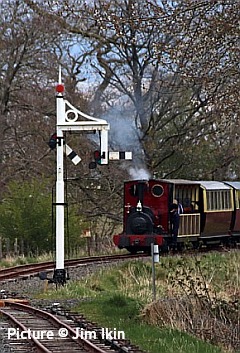
Forthcoming events
(see also our Calendar page for venues)
Note: we have removed all entries relating to meetings as the events are cancelled.
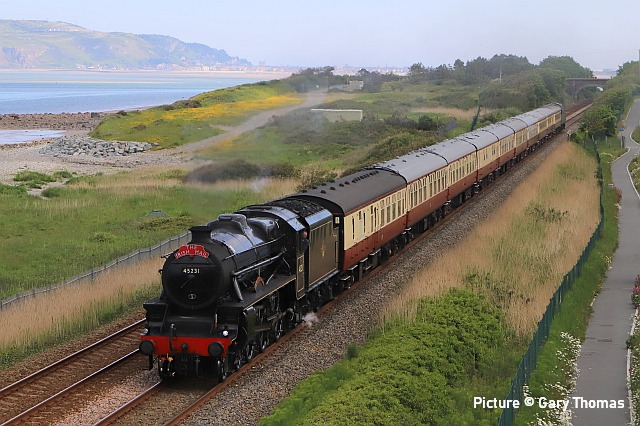
45231 passing Dwygyfylchi, 31 May (Gary Thomas).
Steam on the Coast
Bank Holiday Monday 31 May saw another steam-hauled excursion arrive on the Coast. It originated in Worcester, top-and-tailed by Locomotive Services 47 614 (actually 47 853) and D1935 (actually 47 805) Roger Hosking.
The shunting at Crewe was quite protracted: when the train arrived from Worcester into Platform 12, the leading loco 47 614 was uncoupled, and 45231 (complete with support coach) was used to shunt 614 into bay platform 10, then returned to couple to the train. This was all captured on one of the Railcam company's cameras.
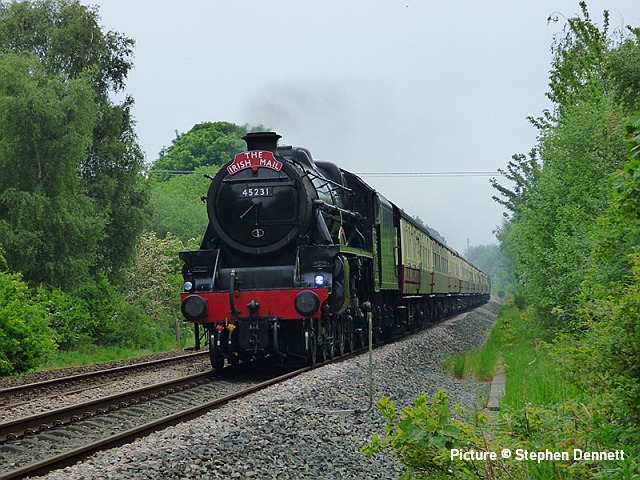
We pick up the train near Flint, where Stephen Dennettt was safely behind the 'kissing gate' of a foot crossing.
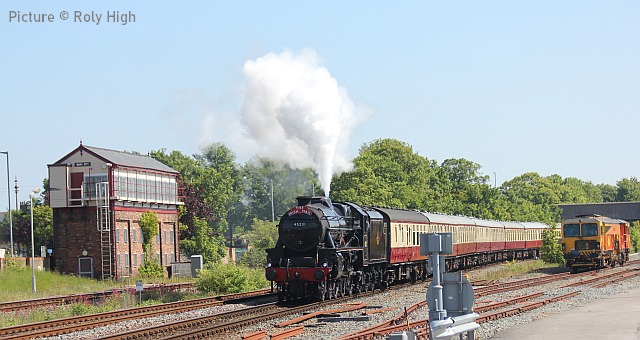
Rhyl (Roly High). The train gradually fell behind the schedule after Chester, reportedly due to 'signalling problems' and the actions of a trespasser who decided to stand on the track to get a better picture. Any information about this incident will be passed on.
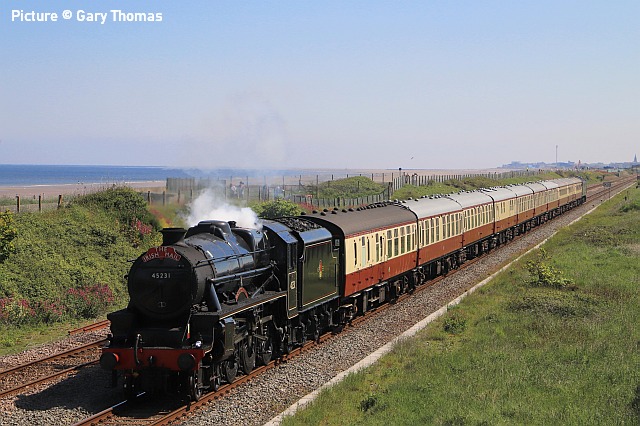
Abergele (Gary Thomas).
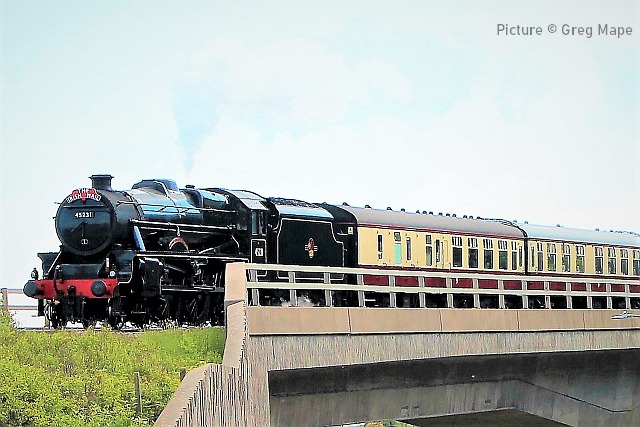
Crossing the A55 at Old Colwyn (Greg Mape). Arrival at Llandudno Junction for the watering stop for 39 minutes late, but departed just 9 late; how this was managed we don't know. Arrival at Holyhead was just 17 minutes late.
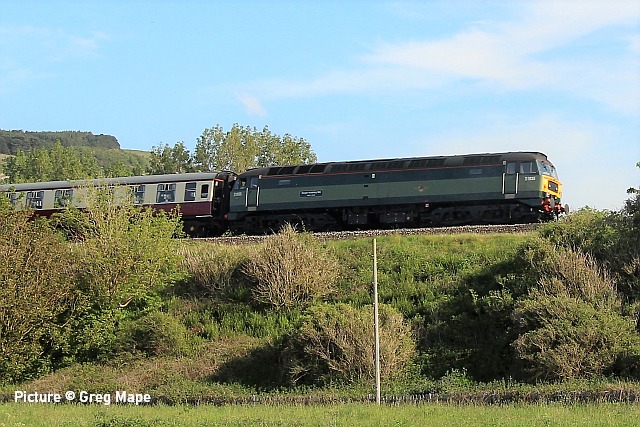
The 47 on the rear (Greg Mape).
The return run was not trouble-free either: or some reason the locomotive's departure from Holyhead to Valley to turn on the triangle there was much delayed, and departure of the train from Holyhead was 53 minutes late. 47 593 took over at Crewe and reached Worcester just 24 minutes late. The empty stock working arrived back at Crewe at 01:00.
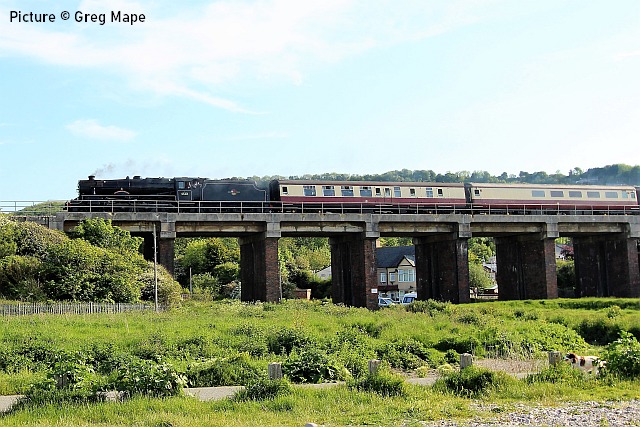
Llandulas, 55 minutes late (Greg Mape).
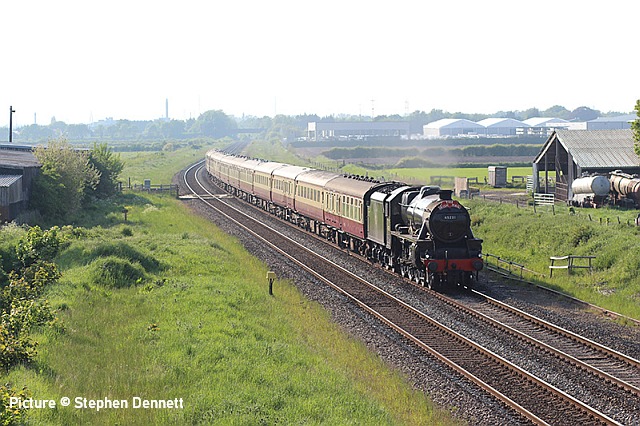
Beeches Farm (Stephen Dennett).
On the narrow gauge - with Jim Ikin
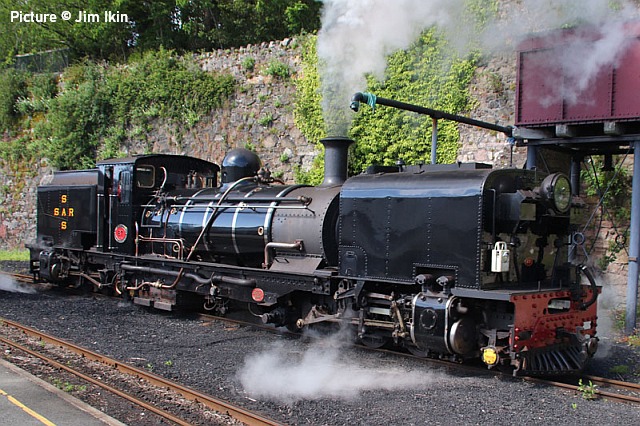
On 25 May Welsh Highland Railway number 87 has just finished the last trip of the day in Caernarfon and is watered before taking out the empty stock.
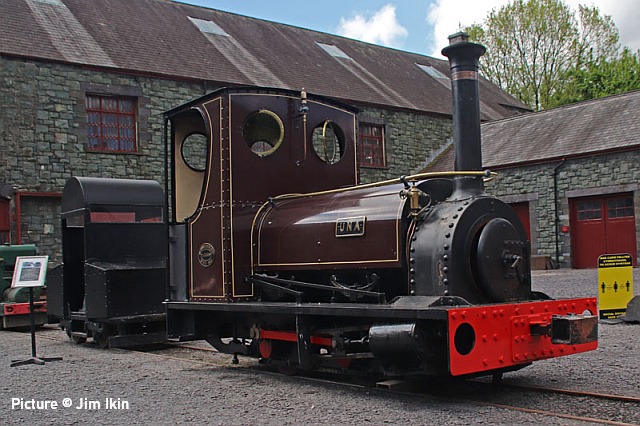
1905-built Hunslet Una stands in the yard at the National Slate Museum on 27 May. The loco was built for the Pen Yr Orsedd Quarry in Dyffryn Nantile.
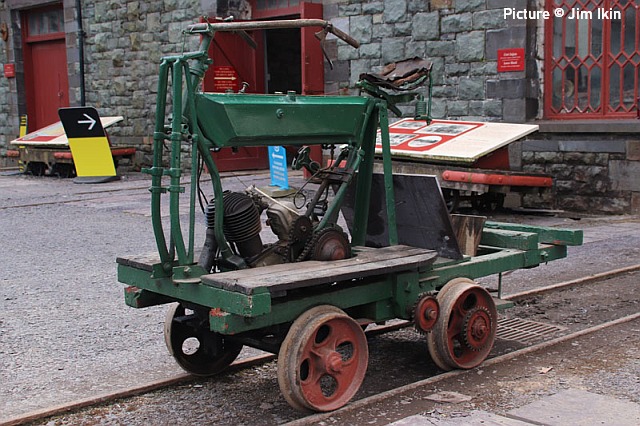
Also in the yard, an inspection ‘bike’ classed as a locomotive which was built by fitter William Williams of Blaenau Ffestiniog. He built the chassis and mounted the motor on it. Always worth a visit the museum has superb working workshops, slate cutting etc.
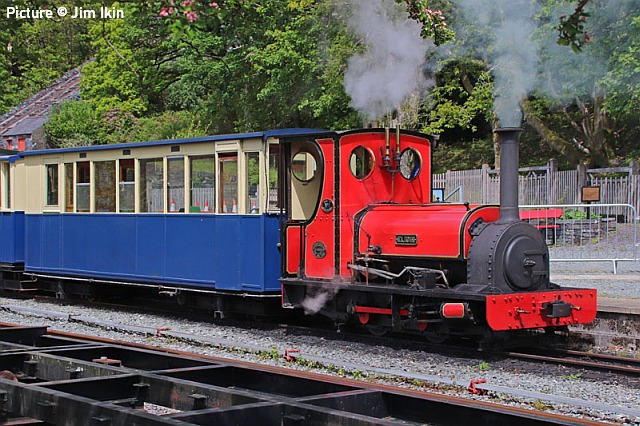
On the lakeside at Llanberis, 1899-built Hunslet Elidir at Lake Padarn Station on the Llanberis Lake Railway between turns.
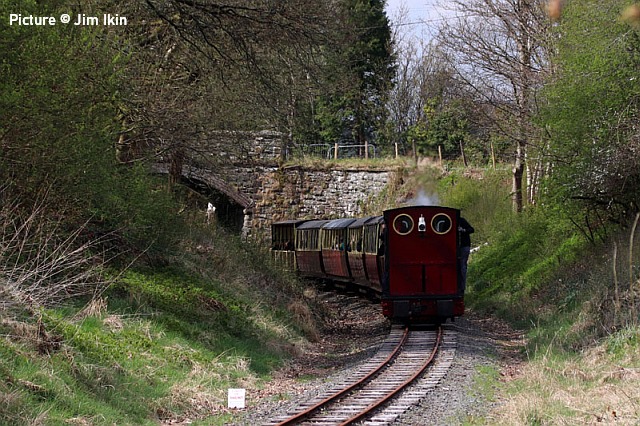
The Bala Lake Railway started its 2021 timetable on 1 May with Maid Marian in charge of the first train seen entering Bala ...
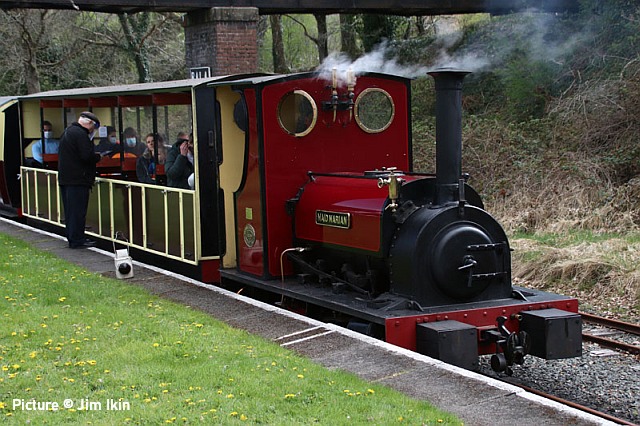
... and awaiting departure for the return journey.
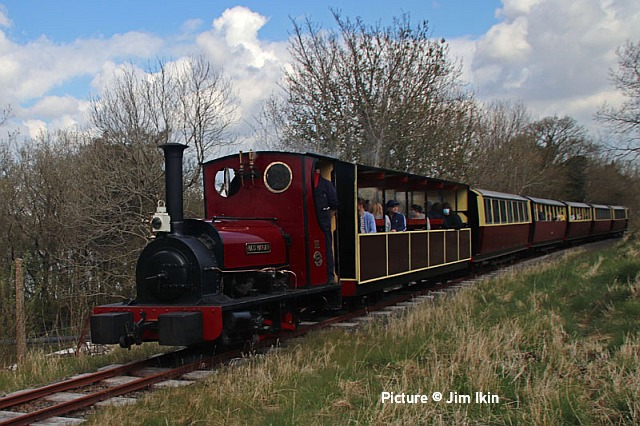
Alongside the lake...
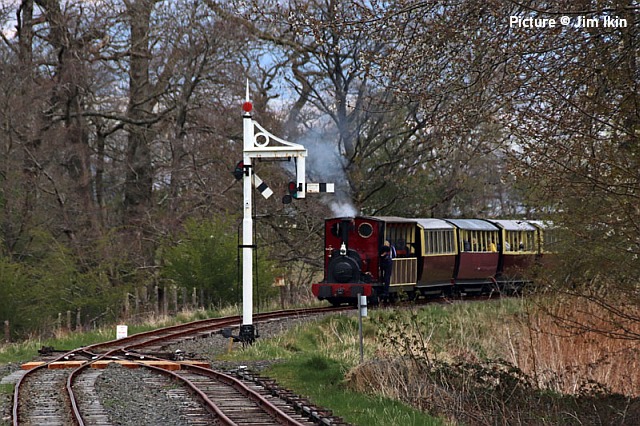
... and approaching Llangower.
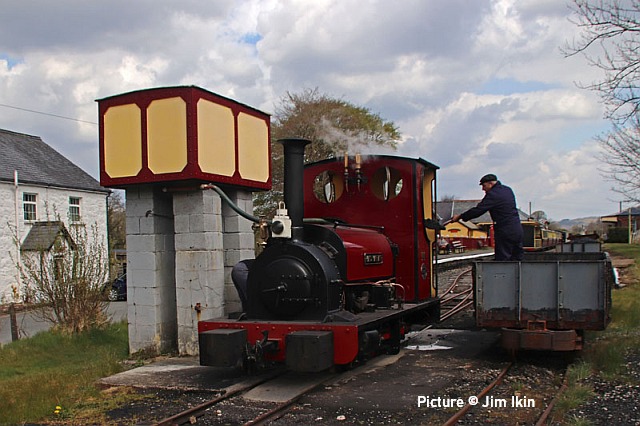
Back at Llanuwchllyn being fed and watered after the first run.
Llangollen Railway auction results
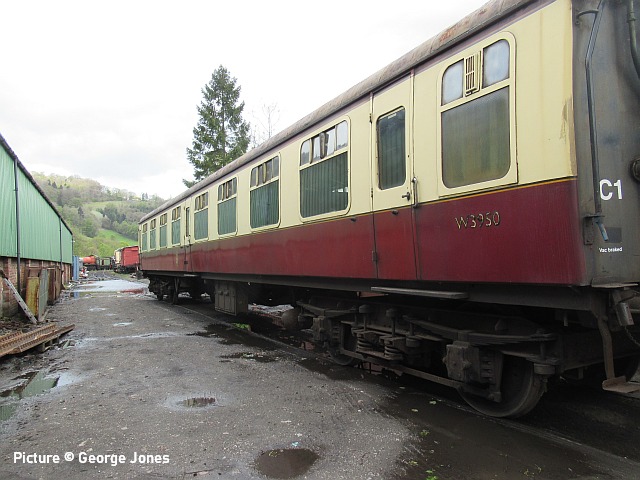
Awaiting departure to the Cambrian Heritage Railway, coach 3950 (George Jones).
The results of the recent auction of the assets of the Llangollen Railway are now available; unfortunately the Mk1 coaches were in demand by other railways and fetched high prices to the the disappointment of some who hoped to keep them on the railway. A selection of the results follows.
The Llangollen Railway Trust did succeed in bidding for coach 4858 which has been adapted with 'acessible' features, and two others, including the 'function coach' have been purchased privately to remain at Llangollen. The others are being spread around the English heritage lines, except three (SK 18421, CK 15667 & BSK 34537) which will go to a new recreational site near Cardiff but will remain at Llangollen in store for the time being, eventually to be converted into camping coaches.
Various vehicles for engineering use have been saved, and the 50-ton crane mentioned here previously as being sold for scrap has been reprieved, although it remains the property of the dealer.
The EE 0-6-0 shunter Davy about which there has been some confusion in these columns was sold to a buyer intending to scrap it, but a post-auction deal now means it will go to the Battlefield Line in Leicestershire.
Other items which have/or will depart the railway include: Pannier 6430 & GWR auto coach 163 to move to South Devon Railway; 0-6-0T Jennifer to go to Alnwick, sold back to original owner; 0-6-ST Austin 1 to go to SDJR Midsomer Norton - on hire for the summer season
Despite all the above, the Llangollen Railway will have enough carriages to run a service, although with just one steam loco, the GWR 2-8-0 3802 initially available, diesel railcar services could fill the gap.
The chairman of Llangollen Railway Trust, Peter Edwards says. “We have emerged from a most difficult period thanks to the support received from many people whose contributions helped us secure the assets required to allow the railway to resume engineering operations. We are now in a slimmed down condition ready to resume train services later this summer and continue as amajor attraction in north-east Wales. However, we are not out of the woods yet and continued support in all its forms is required to get us through the next few months before income streams from passengers are re-established.”
Looking back: Bord na Mona - by David Pool
The Irish Peat Commission, known as Bord na Mona, has responsibility for managing the vast peat deposits in Ireland. For many years the peat was conveyed in 3 foot gauge railway wagons, often to peat fired power stations. The scale of operations was astonishing – around five million tons of peat were handled each year. There were well over 1000 miles of track, and several hundred locomotives, many of which were Hunslet Wagonmaster diesels. Originally there were three Andrew Barclay steam locomotives, built in 1949, one of which was illustrated in my Talyllyn Railway article in the 9 November 2020 edition of NWCR News.
My visits to the Bord na Mona railways were made in 1996 and 1997, when there were indications that peat harvesting would be environmentally unacceptable in the long term, and some of the smaller peat bogs no longer had railway systems. Two sites were offering tourist experiences on the railways, but apparently this had a detrimental effect on the efficiency of the rail systems, and the tourist trains had ended by 2008. Meanwhile Bord na Mona had seen the future to be Wind Farms, and the first had been commissioned in 1992. In recent years the peat fired power stations have been demolished, and in 2020 it was announced that all peat harvesting had ceased at Bord na Mona sites. I consider myself to be fortunate that I was able to see the operation of what is now part of the industrial history of Ireland.
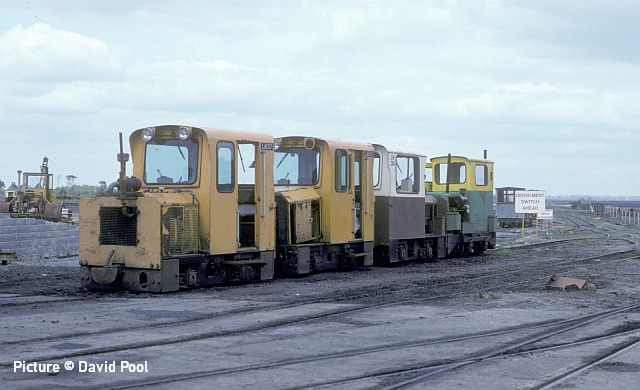
One of the largest systems was in County Offaly, at Blackwater. On 10 May 1996 a line of locomotives was parked in the yard. LM 371, LM 357 and LM 366 were Gleismac LF45 diesels, and LM 111 was a Ruston Hornsby 40DL.

Tourists had the luxury of an air conditioned coach, with a matching Hunslet Wagonmaster LM 323. A short journey onto the bog included various demonstrations of peat cutting and explanations of the origin of the bogs. The enterprise was advertised as the Clonmacnoise and West Offaly Railway.
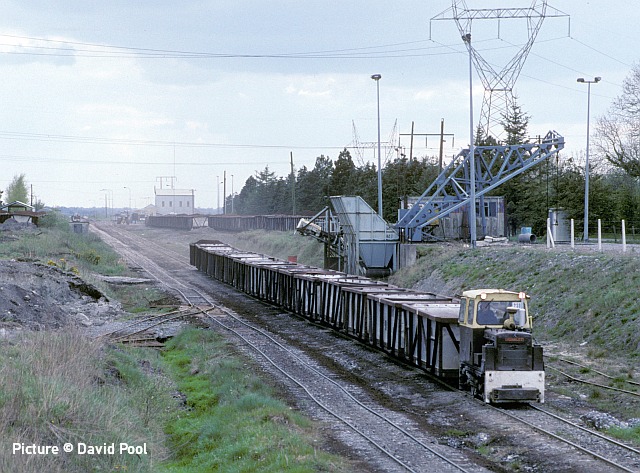
The Blackwater system fed the West Offaly peat fired Power Station. Viewed from a nearby road, LM 230 is on the main line from the Power Station. The equipment on the right could be a loading system from a peat shredder.
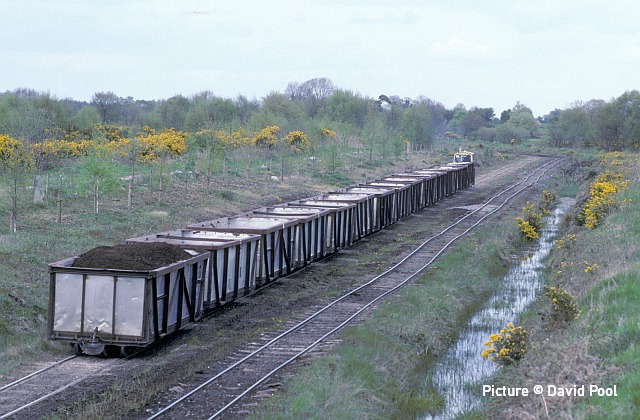
As the train headed away, the condition of the track illustrated the effects of a peat trackbed. I believe the loaded rear wagon is a tactic to keep the other empty wagons on the track. Maybe railway modellers could confirm this?
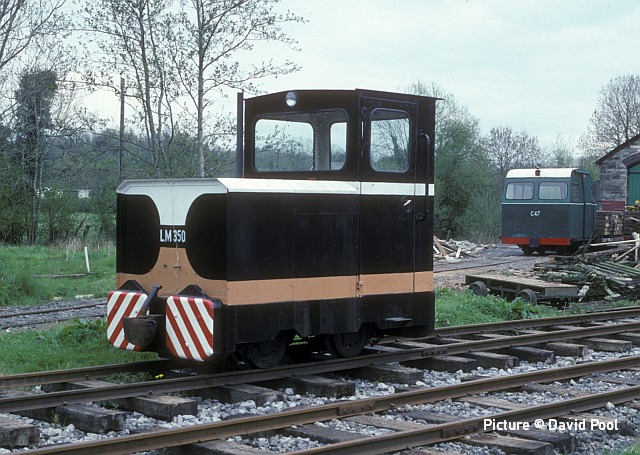
With the decline of the peat railways, various preserved railways have been able to acquire 3 foot gauge rolling stock without too much difficulty. At Dromod on 11 May 1996, LM 350 (a Simplex 60SL) had been repainted in a pseudo CIE main line livery, and a railcar C 47 was outside the shed. This had been built by Bord na Mona and Southern Motors, and fitted with a Ford engine.
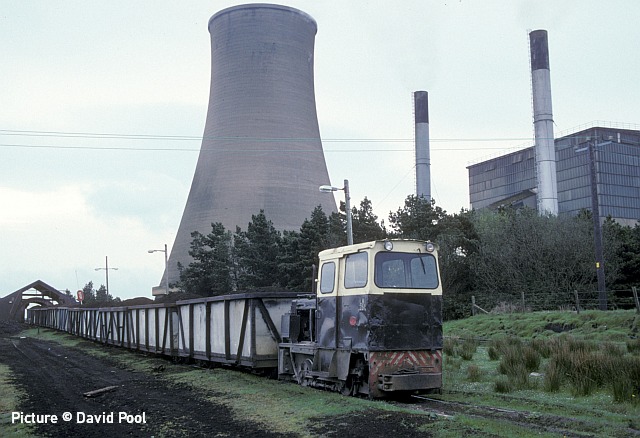
I moved on to County Mayo to investigate the Bellacorick system. LM 251, another Hunslet Wagonmaster, was alongside Bellacorick Power Station on 13 May 1996. It appears to be pushing loaded wagons towards a rotary Wagon Tippler in the distance. The cooling tower and power station have since been demolished and the site cleared.
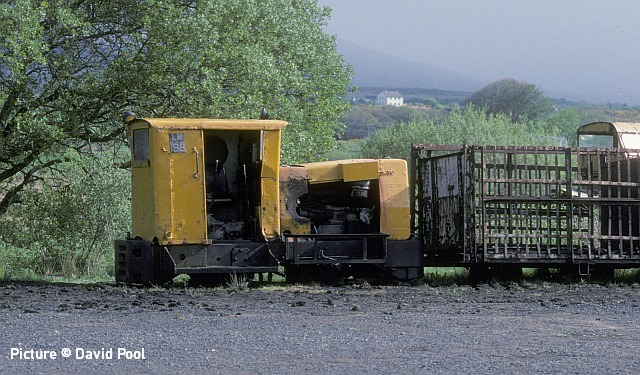
Although most of the peat railways were 3 foot gauge, there were a few 2 foot gauge systems still in use the following year. On 6 May 1997 I sought out one such line at Glenties, in County Donegal. There was no sign of activity on the site, but LM 198, a Ruston Hornsby 48DLU, was visible with a lattice type peat wagon.
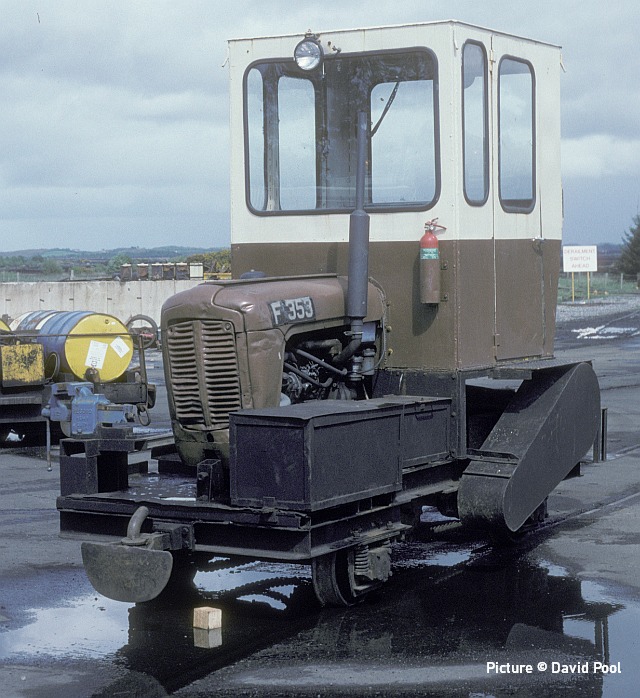
Calling at Blackwater the next day, a Rail Tractor F 353 was in the yard. These were originally Massey Ferguson tractors, adapted with a chain drive to rail wheels. There appears to be a Fire Extinguisher on the cab – hopefully more a matter of prudence rather than a necessity, since they carried oxy-acetylene welding equipment and tools for on site repair work!
North Wales Coast home page | Archive | Previous Notice Board